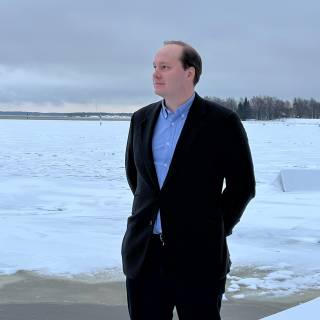Dr Markus Lähteenmäki is an IAS Visiting Research Fellow in 2023-24 and 2024-25.
Markus Lähteenmäki is a historian and curator of art and architecture. He was educated as an art historian at the University of Helsinki (BA, 2012) and the Courtauld Institute of Art (MA, 2013) and holds a doctorate from the Institute for the History and Theory of Architecture (gta), ETH Zurich (2022), where he worked from 2017 to 2021. He is currently working to turn his doctoral thesis titled ‘The History that is Made In the Streets’: Architecture and Images of Public Space in Revolutionary Russia into a book. In 2022 he held a postdoctoral fellowship at the University of Helsinki, where he is a co-investigator on the research project ‘The Political Agency of Architecture in Revolutionary Europe, 1830–1930’. His previous work includes acting as the Curator and Director of Projects for the UK-based Drawing Matter collections (2014-2016). His research interests cover various areas of contacts and contexts of art, architecture and society, including mediality and materiality of built environments and urban forms, monuments, drawing as a medium, relations of literature and poetry to architecture, histories of the Soviet Union, Russian Empire, and the Nordic and Baltic regions, as well as revolutions, avant-gardes and their counter-movements. His writing and research have been recently published and is forthcoming in journals such as Harvard Design Magazine, Art History and Comparative Studies in Society and History. His curatorial work that includes exhibitions at the Swiss Architecture Museum, Pushkin House London and Hauser & Wirth Somerset has been featured among others by the Financial Times, Architectural Review and Art Forum. He is the General Chair of the European Architectural History Network Thematic Conference States in Between: Architecture and Empire in East Europe and North Eurasia organised in Helsinki in June 2023.
IAS Project
The project undertaken at the IAS and funded by Swiss National Science Foundation (SNSF) investigates the stakes and meanings of urban forms and their representations in culture and politics, focusing on cities built under Russian and Soviet rule and the city of St Petersburg-Petrograd-Leningrad in particular. The project studies the ways in which cities and urban forms became means of forging and solidifying, or undoing and remaking, social and political orders, imperialist and colonial processes, as well as building new cultures.
An important part of the projects is, on one hand, to rethink ways to write the histories of architecture in between material, visual and literary, social and cultural histories; and on the other, an attempt to bring the close reading of architecture with its visual and material forms and its various instrumentalities to the writing of social, political and cultural history. On this basis, the project analyses changes in the city’s material reality – erasing, reframing, or erecting monuments, constructing and re-constructing urban spaces and infrastructures, and building new neighbourhoods to reconfigure spatial hierarchies of entire cities – and the way they worked with urban texts and imagery in processes of cultural and societal change. It traces architecture and urbanity as an instrument of making and unmaking, solidifying, survival and contesting of imperialism and revolution.
 Close
Close


